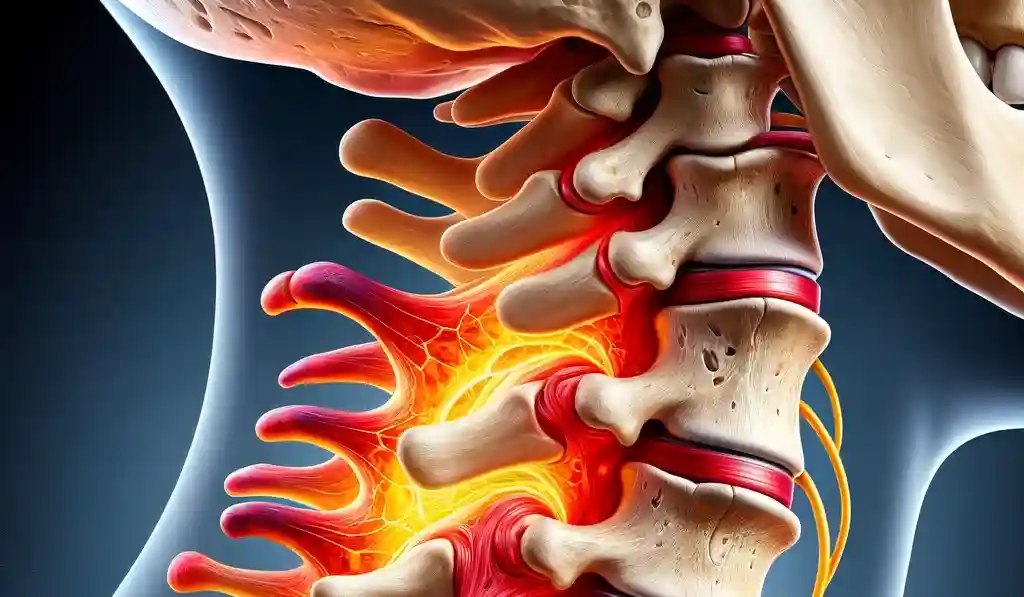Many are suffering from back pain brought on by disc bulges. Conditions such as the superimposed central disc protrusion disc bulge that touches nerve root, disc bulge, and paracentral protrusion can all contribute to significant discomfort and mobility issues. Knowing these conditions and pursuing the most effective treatment options is essential in reducing pain and improving your quality of life. Dr. Ken Nakamura is a chiropractor who offers valuable insight into these conditions. He also offers advice on how to manage these issues.
What is a disc bulge?
The intervertebral disc, which acts as a cushion in between vertebrae, extends beyond its boundaries, a disc bulge is the result. This can happen due to wear and tear, injuries or even degeneration as time passes. The extent of disc bulges can vary. They can be minor protrusions, causing no or little discomfort, but can also be more extensive bulges that could cause significant discomfort.

Superimposed Central Protrusion of the Disc
Superimposed central disk protrusion (SCP) is one form of disc bulge that occurs in the central part of the spinal cord. According to Dr. Ken Nakamura, this protrusion could result in compression of the spinal cord or nerve roots, which can lead to symptoms such as an achy, numb, or an inability to move the affected area. It’s challenging to treat this condition due to its central location which could cause it to affect both right and left sides of the body.
Disc Bulge Abutting Nerve Root Treatment
A disc bulge that is in contact with nerves can trigger extreme pain and neurological signs such as sciatica. Sciatica can be described as a pain radiating from the back of the leg. The pressure placed on the nerve root can cause pain, inflammation or even the loss of functionality if untreated.
Dr. Nakamura explains that disc bulge abutting nerve root treatment a nerve root typically involves a combination of conservative and, in some cases, interventional approaches. Conservative treatments may include physical therapy, anti-inflammatory drugs and exercise modification to lessen pressure on the nerve. In more serious cases, epidural steroid injections or surgery may be required to relieve the pain and relieve.
Eccentric Bulge
A bulge in the disc that is eccentric happens in the event that it is not aligned, and usually is located on one side of the spinal canal. This type of bulge can result in unilateral symptoms, which means that pain, as well as other issues are typically felt on one side of the body. The discs that are bulging in the center can be especially problematic due to the fact that they can compress specific nerve roots, leading to localized pain, tingling or weakening.
Dr. Nakamura stresses that physical therapy can be used to improve flexibility and strengthen muscles around the spine. This may help alleviate symptoms and ease the pressure on discs affected by it. In some instances non-surgical therapies like spinal decompression therapy could be recommended to decrease the size of the disc and ease the compression of the nerve.
Paracentral Protrusion
Paracentral protrusions occur when disc bulges are located near the middle of the spine, but is on the side. Like other disc bulges, it can result in nerve root compression resulting in a variety of symptoms, including pain, weakness or numbness.
Dr. Nakamura suggests that paracentral protrusion is treatable with the combination of conservative or non-surgical therapies. This includes physical therapy and pain management strategies and lifestyle changes. In more severe cases, surgical intervention may be necessary to cut off the protruding disc material and relieve the nerve that is affected.
Management of Disc Bulge-Related pain
The treatment of disc bulge pain is dependent on the severity and specific symptoms of the problem. In mild-to-moderate cases the treatment that is conservative can be effective at reducing pain while increasing function. It could include:
Physical Therapy: Exercises to improve flexibility and strength of those muscles that support the spine.
The use of medicines such as anti-inflammatory drugs or muscle relaxants as well as analgesics to control pain and reduce inflammation.
Lifestyle Modifications: Adjustments made to daily activities to avoid exacerbating the condition, such as proper posture, ergonomic adjustments and refraining from heavy lifting.
Interventional Treatments: If your current treatments fail, you may think about options such as epidural steroids infusions or minimally-invasive surgical procedures.
Also, you can read our conclusion.
It is crucial to know the distinctions between conditions such as disc protrusions with superimposed discs, disc bulges abutting neural roots, eccentric disc protrusions and paracentral bulges to be able to effectively manage pain. Dr. Ken Nakamura emphasizes that it is essential to spot the symptoms, seek proper treatment, and improve the overall quality of life. It is vital to address disc bulges, whether through traditional methods or, in certain instances, surgery, if you want to live a lifetime free of discomfort.
